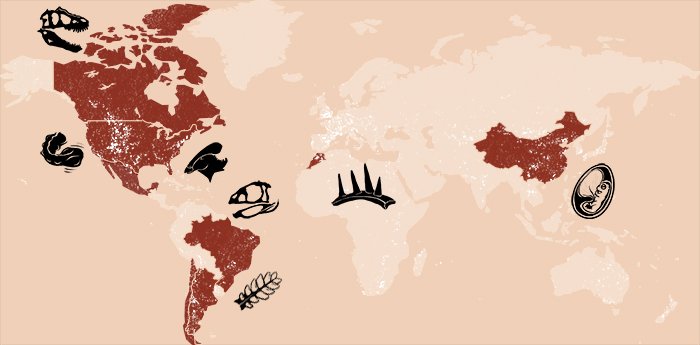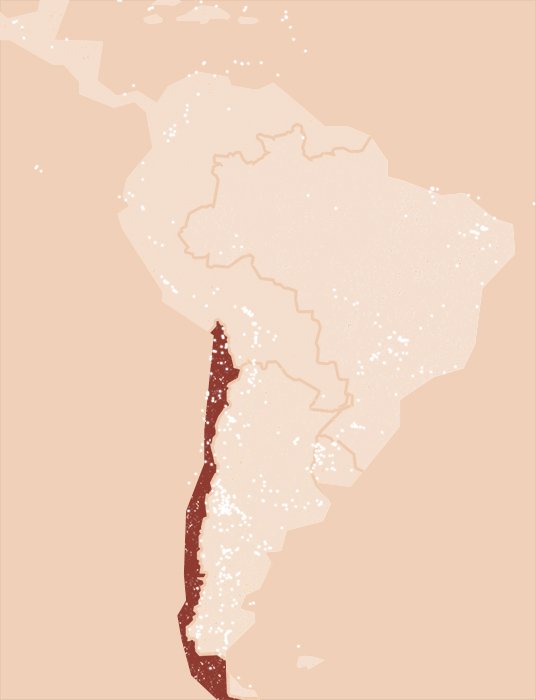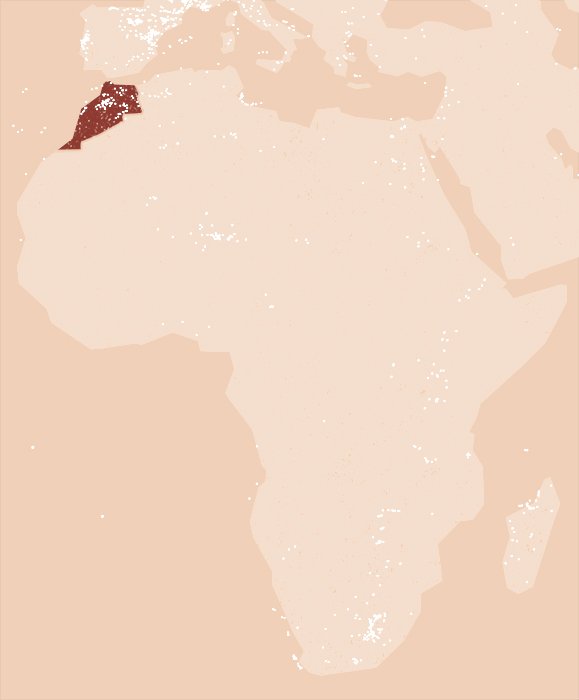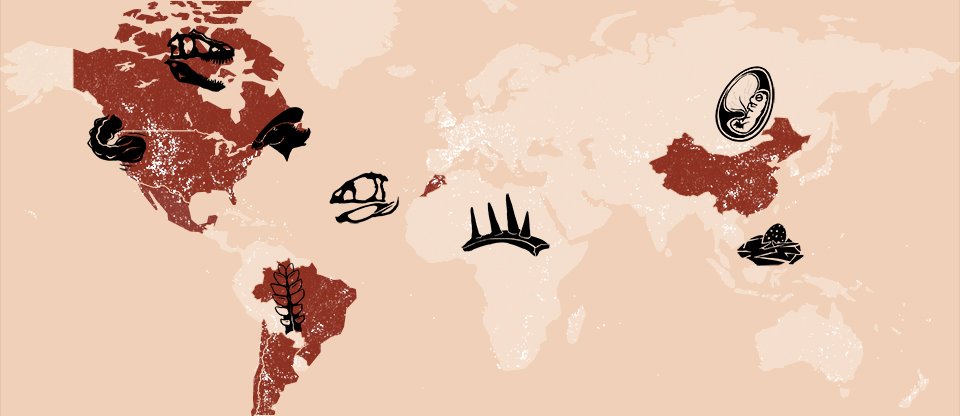Dinosaurs: Parts of the World
Thanks to film franchises like Jurassic Park and the animated Land Before Time series, even children can recognize dinosaurs by their distinguishing body parts. Think of the frilled skull of a Triceratops, the long tail of a Velociraptor, or the iconic small arms of the T. rex. But we’re only just beginning to discover the vast collection of dinos waiting beneath the dirt.
In the last few decades, our knowledge of dinosaurs has roared to life, thanks in part to new scanning technology. According to National Geographic, paleontologists have dusted off 45 new dinosaur species every year since 2003. And many of these discoveries unearthed dinosaurs with especially unique features. The diversity among these newly uncovered creatures demonstrates the Creator’s eye for design.
Dinosaur Finds by Country

Filtered by recorded data from the last several decades under the classification Dinosauria.
Data from The Paleobiology Database (paleobiodb.org) as of October 2022.

Map Key: Each white speck represents the location of a reported fossil finding.
Data from The Paleobiology Database (paleobiodb.org) as of October 2022.
Canada

Scary Skull
Thanatotheristes degrootorum

Called the “reaper of death,” this dino would’ve been quite terrifying to behold with strange bumps dotting his skull and distinct vertical ridges running from his eyes along his upper snout. Scientists aren’t sure what purpose this scary skull served.
Basketball Skin
Hadrosauridae
It’s not often that paleontologists find remnants of skin still attached to a fossil. But this dino’s leathery coat was especially fascinating with its bumpy, basketball-like texture.
United States

Utah: Armored Tail
Akainacephalus johnsoni

Predators beware! This dino protected himself with an elaborate armor of spikes and horns on his skull, and a large, bony club at the end of his tail.
Missouri: Dino Duck
Hypsibema missouriensis
Full-size, this dino would have been about 35 feet long—nearly the length of a school bus. But his truly striking feature? A duck bill.
Mexico

Comma-saur
Tlatolophus galorum

Always runway ready, this herbivore modeled a unique “hat”—a comma-like shape on his head that probably helped form the sound of his call.
Brazil

A Toothless Carnivore?

Berthasaura leopoldinae
This toothless dino came from a family of carnivorous theropods. At first, the beak-like mouth and lack of teeth caused scientists to puzzle over his diet. They’ve concluded that he probably used his beak to nibble at both plants and small prey.
Argentina

Little Arms
Meraxes gigas
The T. rex wasn’t the only dinosaur that roamed the earth sporting a massive head and tiny arms. This newly discovered species showed researchers that this big guy had large muscle attachments and fully developed pectorals despite his small arms.
Chile

Fan Tail

Stegouros elengassen
Unlike his ankylosaur cousins who may have fought with their knobbed, club-like tails, this dog-sized dinosaur had a flat and frond-like tail. In addition to protection, perhaps he used it to fan himself on a hot day?
Morocco

Rock ’n’ Roll Ribs
Spicomellus afer

This barbed beast sported some unique armor: spiky ribs protruding through his skin. Long spikes attached directly to his rib bones, making him a fearsome sight—and a dangerous competitor.
Dino Paddle
Spinosaurus aegyptiacus
The fin-like qualities on this dinosaur’s tail probably helped propel him through the water. Scientists believe he got along swimmingly underwater.
China

Belly Button Scars
Psittacosaurus

Inside an egg, a baby dino was connected to the yolk sac by its abdomen to receive nutrients, similar to the umbilical cord in mammals. When the dino hatched, the area once attached to the yolk sack left behind a “belly button” scar. Presumably, most dinosaurs lost the scar after a few days, but this fossilized creature had changes in the skin pattern right where the scar would be, making it the first discovered dinosaur belly button.
Dino Derriere
Psittacosaurus
Researchers discovered a multi-purpose orifice on this dinosaur fossil. The cloacal vent might have been used for waste elimination, mating, and egg-laying, making it unlike any other known dino’s derriere.
Recommended Resources

Answers in Genesis is an apologetics ministry, dedicated to helping Christians defend their faith and proclaim the good news of Jesus Christ.
- Customer Service 800.778.3390
- Available Monday–Friday | 9 AM–5 PM ET
- © 2026 Answers in Genesis





